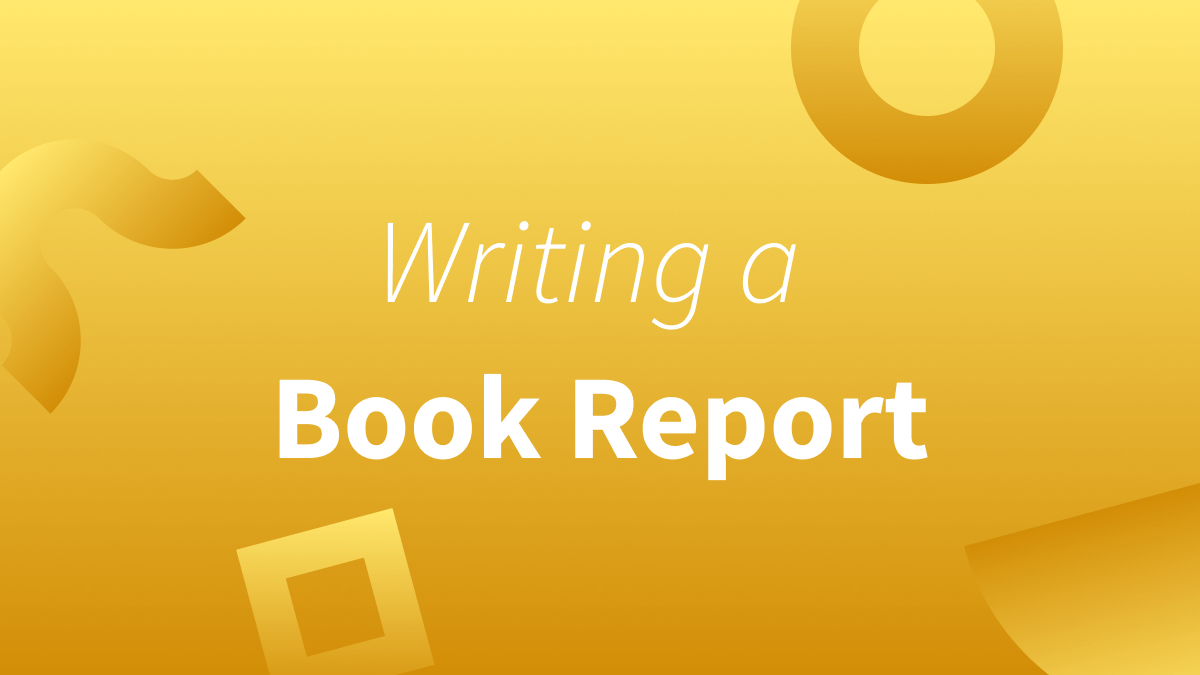Quick Summary on How To Write a Book Report
- As you read the book, highlight and take notes.
- Reread the instructions of the assignment.
- Organize your notes and create an outline.
- Write a compelling introduction.
- Include quotations, examples, and supporting evidence in the body paragraphs.
- Encapsulate the main point of your text in the conclusion.
- Edit and proofread.
What Is a Book Report?
A book report is an essay in which students explain and support their thoughts and views on a story, novel, or any other literary work.
There are several different types of book reports. Regardless of which type you’re writing, teachers and professors usually assign book reports as a way to ensure that their students have thoroughly understood the book. Below, we’ll go over how to write a good book report in seven easy steps.

How To Write a Book Report
1. As you read the book, highlight and take notes.
The first step of writing a good book report is to read the book, of course. However, it’s important to highlight and takes notes while reading it. Highlight anything that stands out to you or that evokes certain emotions. Write notes on patterns, themes, and characters. If you’re writing a book report on a nonfiction book, write notes on the major points of the book and what you think about them.
2. Revisit and reread the instructions of the assignment.
Once you’re done reading and taking notes, reread the instructions of the assignment. Find what it is you’re supposed to write about. Is it a character analysis? A plot summary? An exploration of themes and patterns, or something else? It’s also essential to follow the formatting guidelines, so make sure to use the correct font and spacing. If you have any questions, reach out to your teacher or professor.
3. Organize your notes and create an outline.
Gather your notes and arrange them into categories. Once you’ve completed this, write an outline and organize the categories to become the paragraphs of your book report. Jot down bullet points on what each paragraph will include and what part of the book can support it. As you start writing the book report, remain flexible. You don’t have to follow the outline exactly. You may realize that a few edits create a better flow.
4. Write a compelling introduction.
The introduction should be informative and catchy. You may want to start with a quote, climactic scene, or an unusual observation you had while reading the book. Towards the end of the introduction, you should write a one or two-sentence summary about the book, and then the last sentence should explain what exactly you’ll be writing about in the rest of the report.
Book Report Elements
Keep in mind that all book reports should contain:
- The name and author of the book.
- A thesis statement.
- If you're writing about a fiction book, mention the setting, time period, and characters.
- If you’re writing about a nonfiction book, mention the author’s main point in writing the book.
- Evidence to support your arguments.
5. Include quotations, examples, and supporting evidence in the body paragraphs.
The body paragraphs are where you can include quotations, examples, and supporting evidence that bring your book report together.
For example, let’s say you’re writing a character analysis. You believe that the character that everyone sees as the protagonist is actually the antagonist. You should write why you believe that and include specific scenarios that help prove your point.
Or if you’re writing about a non-fiction book, you could use the body paragraphs to write about why you agree or disagree with the author. Similarly, you’d have to use examples and evidence to support your argument.
It’s a good idea to start off with your most compelling, evidence-backed point. Leave the weakest arguments for the middle, and end with another strong point. Lastly, whether you’re writing about fiction or non-fiction, commenting on writing style and tone is recommended (especially if it’s explicitly requested in the instructions).
6. Encapsulate the main point of your text in the conclusion.
The conclusion is just as important as the introduction, so make sure to set aside enough time to write one (students tend to rush through this part). Use the concluding paragraph to pull all your arguments together. Reiterate again what the main point was about, and then briefly summarize the main idea of your book report.
7. Edit and proofread.
Now that you’ve completed the first draft of your book report, it’s time to reread and make edits if needed. Are there any paragraphs you can move around that’ll improve the rhythm of your writing? Do you have enough evidence to back up your claims? Is your introduction captivating and descriptive?
While you’re rereading the book report, you should also be looking for typos and spelling, grammar, and punctuation mistakes. If you want an extra set of eyes to look for all types of errors, you should use LanguageTool as your spelling and grammar checker. Not only will this advanced editor correct mistakes, but it supports more than twenty languages—meaning your book report will be perfect regardless of which language you’re writing it in.

